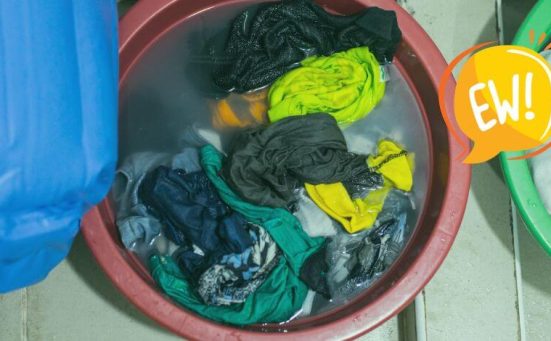
Does Ironing Kill Germs, Bacteria & Viruses?
Do you hate ironing your clothes? Don’t care if your garments are creased or wrinkly?
Aside from making your clothes appear crisp, there are other benefits to ironing you would want to get.
For this article, we will talk about whether ironing can really kill the germs and viruses that are on your clothing.
In case you don’t like to use your steam iron and it’s being covered with cobwebs somewhere, get it out as you might want to start using it again.
Will Ironing Kill Germs, Bacteria, And Viruses?
Did you know that bacteria and fungi are types of germs? If not, the two are indeed a type of germs, such as fungi and protozoa.
All of us have heard of germs before. From what we studied at school and heard in the news, germs can be found anywhere. Yes, even on our clothes[1].
Germs can be the cause of many types of sickness and infections, which is why we have to clean our environment well. Since germs are everywhere and can be harmful to our health, you may be thinking of ways to kill them.
One of the most effective ways to kill germs when they’re in our clothes or bedding is by ironing them. Why? Because most germs don’t do well with heat.
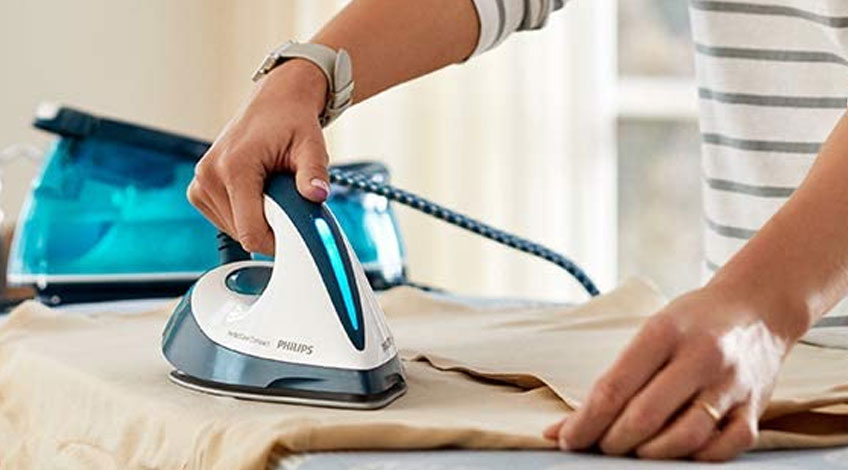
Most steam irons have temperature that ranges between 110℃ to 230℃. Most types of germs are killed when exposed to heat that’s around 60℃ to 100℃.
Can you imagine what will happen when you press an iron with a temp of 110℃ on a shirt that’s already growing bacteria? That’s right, the heat of the iron will halt the bacterial or fungal growth on the fabric.
Ironing to kill Bacteria on fabrics
Bacteria, a type of germ, is what usually causes the bad odour on your clothing.
They thrive in warm and moist environments, which is unfortunately common when we wear our clothes.
No need to worry though, as ironing can definitely kill the bacteria that’s on fabrics. Usually, bacteria will not be able to withstand a temperature of 60°C, which makes ironing a great way to banish them from your clothing.
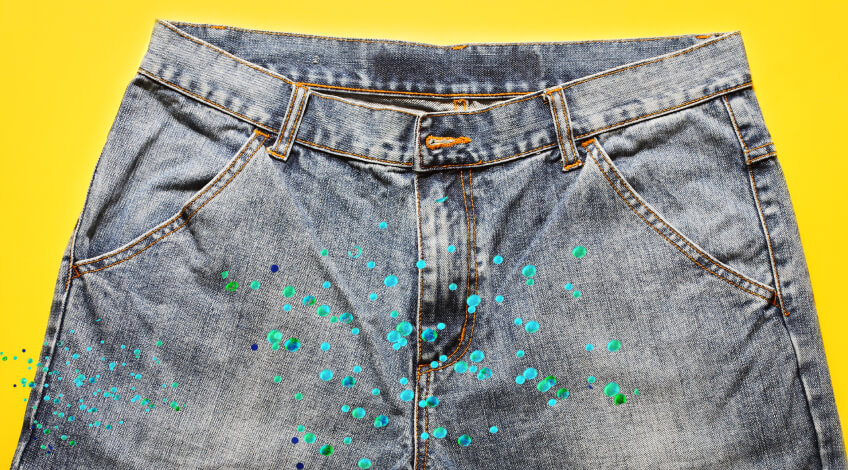
If you have some type of skin condition, bacteria may be the culprit that will irritate your skin further[2]. Ironing your clothes with the right temp can help ensure that any swelling, redness, and other symptoms you’re experiencing will lessen.
NOTE: Before using your iron, make sure to read the label on your garments. Some fabrics can only be steamed or air-dried, which could cause you to ruin your clothes by mistake.
Ironing to kill Viruses on fabrics
Aside from bacteria, viruses can also get on your garments and bedding.
Although viruses will not be able to survive long without a living organism, it wouldn’t hurt to take precautions as they can cause sicknesses such as colds and flu.
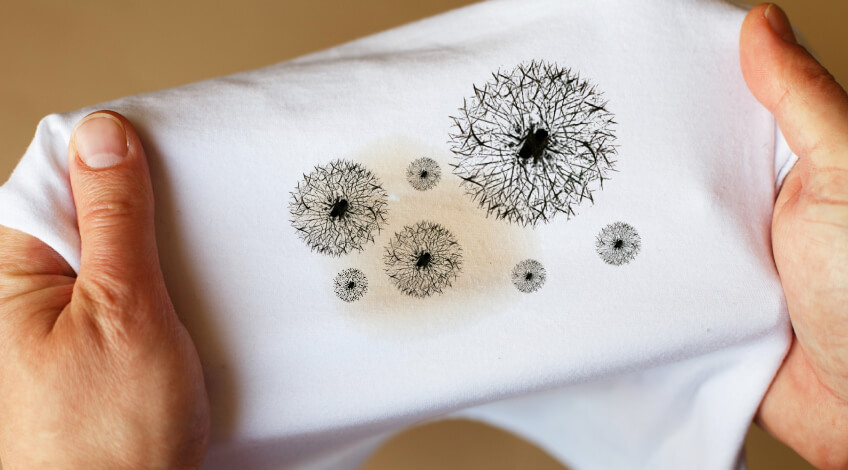
Luckily, you don’t need to use harsh chemicals and laundry products to remove them from your garments. Ironing your fabrics can help rid the virus due to the hot temperature it releases.
No products found.
What else can ironing your clothes do?
Aside from killing germs and bacteria, ironing your fabrics will also help get rid of bed bugs.
If you have an infestation on your bed, washing your bedding with hot water and then ironing will kill the adults and eggs. Use a temperature between 60℃ to 100℃ on your iron if the material can take the heat.
Other tips to kill microorganisms on your fabrics
Ironing is effective in killing various microorganisms such as germs and bacteria on your fabric. Of course, there are other ways to do so, like the following:
Use hot temperatures
Hot washes are the most effective and efficient way to clean your clothes and bedding.
As long as the type of fabric will allow it, use 60℃ or higher temperature for clothes that are dirty, smelly, or stained. Doing so will allow the garment to be thoroughly cleaned and will kill any bacterial or fungal growth.
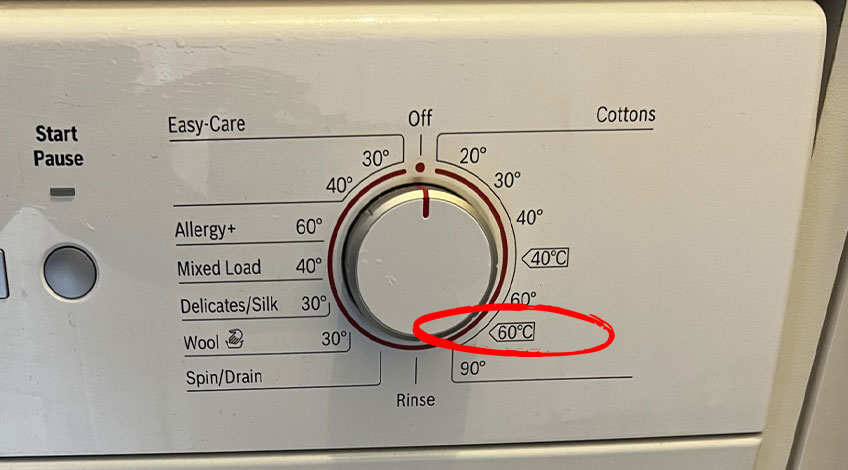
Get a good detergent
Using a good detergent doesn’t mean that you have to buy the most expensive one in the shop.
Instead, read through the reviews of real people and do a trial-and-error yourself. After all, the product that works well in removing tough stains while not irritating your skin may cause the latter to another.
- Extra softness for sensitive skin
- Brilliant cleaning with new pre-treat cap for best laundry results
Have a regular laundry schedule
Are you not consistent with your laundry schedule? Do you wait until the hamper is full before you load the washer up?
Unfortunately, this habit encourages bacteria and fungi to grow on your fabrics. If you’re wondering why your clothes smell mildewy, the reason is due to your damp clothes being left moist for a while, creating an environment where germs thrive.
It’s best to do your laundry at least once a week to keep your clothes clean.
SEE ALSO: How Long Can You Leave Clothes In The Washer?
Sort your clothes
Do you mix your work, exercise, and outdoor clothes with your pyjamas?
Even though they are made with the same material, we highly recommend separating dirty, sweaty, outdoor clothes from your indoor garments.
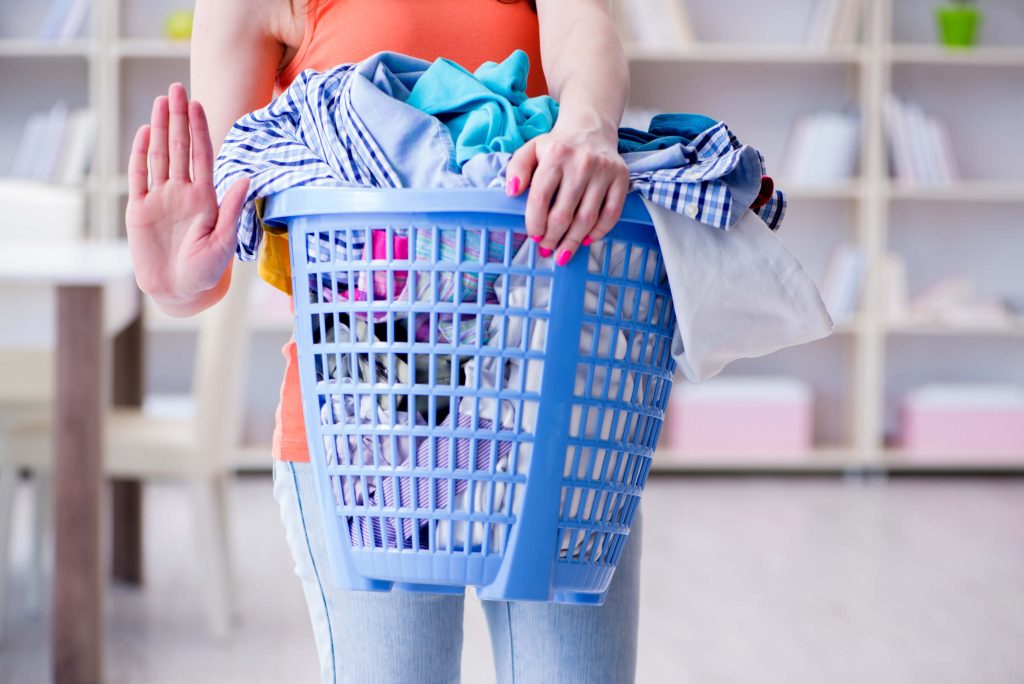
Why? Because you are also exposing them to the bacteria that’s usually in the clothes we wear outside!
Dry clothes completely
As mentioned earlier, germs love damp environments.
It doesn’t matter how well you wash your clothes. If you do not allow them to dry completely and instead put them in storage while still moist, don’t be surprised if they still smell as if you haven’t even put them in the washing machine!
SEE ALSO: Want Great Smelling Laundry? (here’s everything you need to know)
Start ironing your clothes today!
We get it, if you weren’t ironing your clothes before, adding it to your routine now can be exhausting.
However, it’s important to remember the benefits that come with it. Not only will you look more presentable, but ironing your garments may just be the solution for the skin allergies or bad odour the bacteria from your clothes is giving you!
Do you have other laundry-related tips to share? Feel free to comment below!
Frequently Asked Questions
Yes, ironing your towels can kill bacteria, however, the heat may not penetrate as much if the fabrics are extremely thick. In this case, wash your towels in high temperatures between 40-60°C.
Ironing your garments will help remove bad odours as it kills the bacteria that’s making the fabrics smell.
Just like ironing, steaming your clothes will disinfect them due to the heat it releases.
Delicate garments such as silk, cashmere, lace, and wool are usually safe to steam. However, make sure to read the care labels on your clothing to prevent ruining them.
Both ironing and steaming help remove wrinkles and bad odours from your garments. The only thing that makes one better than the other will depend on the fabric. Hard fabrics such as cotton and linen will require an iron and steaming is best for delicate fabrics like silk and lace.
Also, follow us on Pinterest ...


